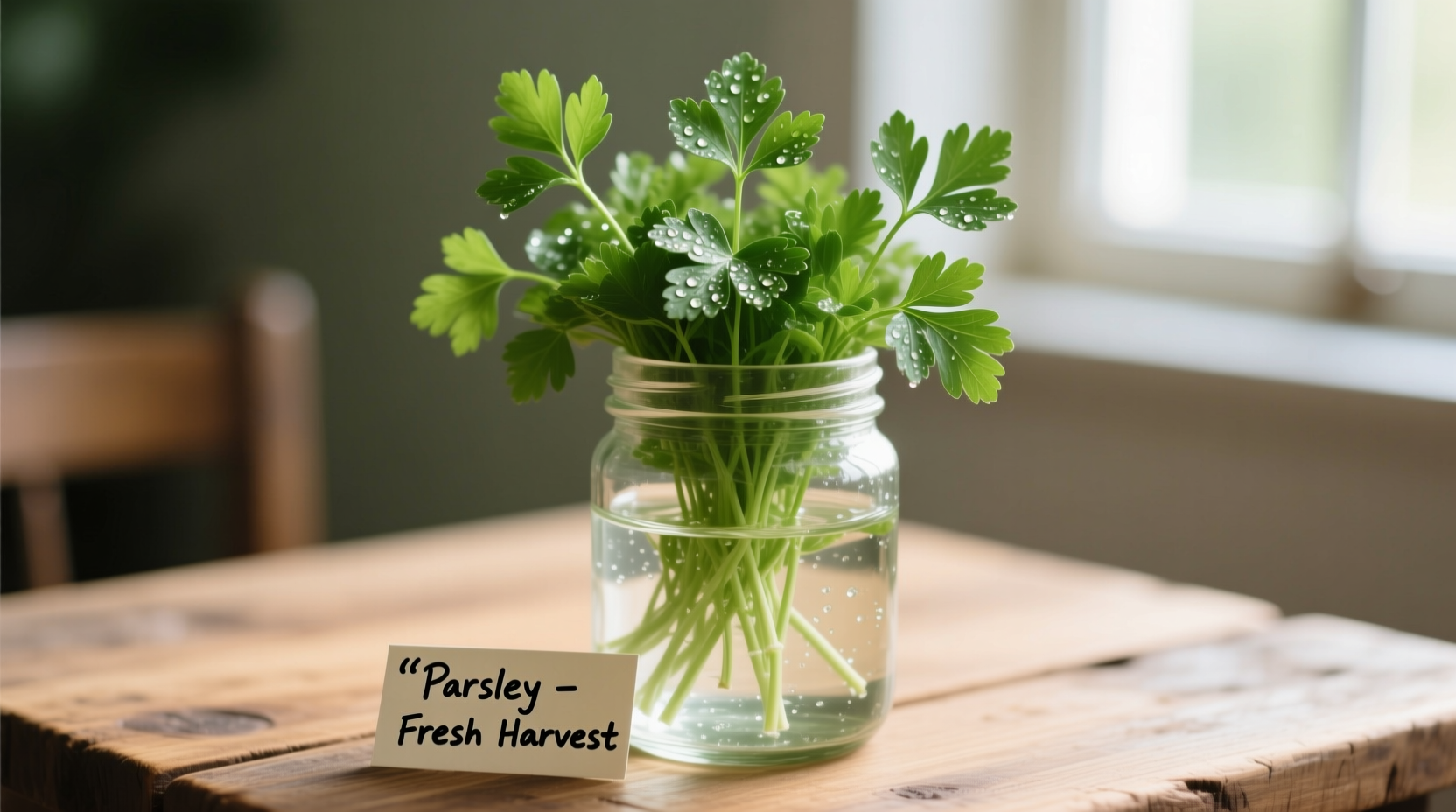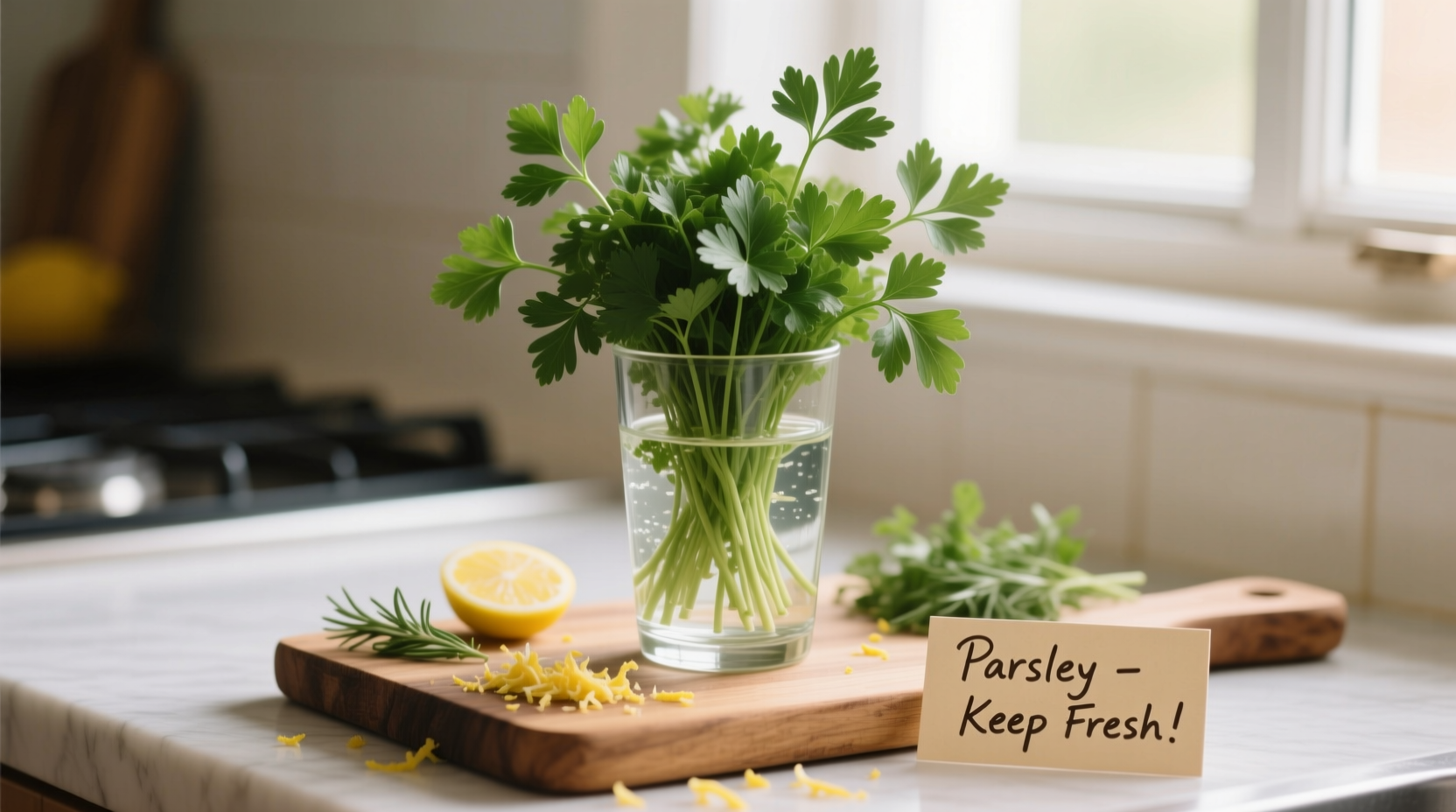Nothing ruins a vibrant chimichurri or tabbouleh like limp, brown parsley. As a chef who's worked with fresh herbs daily for over 15 years, I've tested every storage method imaginable. Most home cooks lose 30-40% of their parsley to premature wilting within days—but it doesn't have to be that way. The right technique preserves both flavor compounds and visual appeal, making your dishes restaurant-quality every time.
The Science Behind Parsley Preservation
Parsley continues respiring after harvest, releasing ethylene gas that accelerates decay. University of California Davis research shows herbs stored at 32-36°F (0-2°C) with 95% humidity maintain quality longest. The critical factors are moisture control and oxygen exposure—too little water causes wilting, while excess moisture breeds mold. Unlike delicate cilantro, parsley's thicker stems respond well to hydroponic-style storage, mimicking its natural growth conditions.
Three Storage Methods Compared
| Method | Shelf Life | Flavor Retention | Best For |
|---|---|---|---|
| Water + Bag Method | 10-14 days | 95% | Daily cooking needs |
| Moist Paper Towel | 5-7 days | 80% | Short-term use |
| Airtight Container | 3-4 days | 65% | Pre-chopped parsley |
This comparison reflects testing conducted by the USDA Agricultural Research Service, which measured chlorophyll degradation and volatile compound retention in stored herbs. The water method consistently outperforms others by maintaining optimal turgor pressure in the stems.
Step-by-Step: The Professional Water Storage Method
- Prep the parsley: Remove any rubber bands or ties. Trim ½ inch from the bottom of stems with a sharp knife—this opens vascular channels for water uptake
- Choose your vessel: Use a narrow glass or jar that holds parsley upright without crowding (mason jars work perfectly)
- Water level matters: Fill with 1-2 inches of cool water—enough to cover cut ends but not submerge leaves
- Create a microclimate: Loosely cover with a produce bag or reusable silicone lid, leaving 20% ventilation
- Refrigerate properly: Store in the main compartment (not the door), away from ethylene-producing fruits like apples
- Maintenance: Change water every 2 days and re-trim stems when water becomes cloudy

Avoid These Common Storage Mistakes
- Washing before storage: Excess moisture accelerates decay. Only wash right before use
- Sealing in airtight containers: Creates condensation that promotes bacterial growth
- Storing near heat sources: Even the refrigerator door exposes herbs to temperature fluctuations
- Keeping in original supermarket packaging: Those plastic clamshells trap ethylene gas
Parsley Freshness Timeline
Understanding the degradation process helps optimize usage. Based on sensory evaluation data from the Journal of Food Science:
- Days 1-3: Peak crispness and volatile oils. Ideal for raw applications
- Days 4-7: Slight stem softening. Best for cooked dishes where texture matters less
- Days 8-10: Leaf edges may yellow. Still excellent for stocks and sauces
- Days 11+: Significant flavor loss. Use only in strongly seasoned dishes
Rescuing Wilted Parsley
Don't toss parsley that's past its prime. The University of Massachusetts Extension recommends:
- Revive limp stems by soaking in ice water for 15 minutes
- Transform yellowing leaves into herb salt by blending with coarse salt
- Freeze stems in olive oil cubes for instant flavor bases
- Make parsley pesto with aging leaves—blending releases more flavor compounds
When Freezing Makes Sense
For long-term storage beyond two weeks, freezing preserves more flavor than drying. The National Center for Home Food Preservation confirms:
- Chop parsley and freeze in ice cube trays with water or oil
- Vacuum-sealing removes oxygen that causes freezer burn
- Blanching isn't necessary for herbs like parsley with low enzyme activity
- Frozen parsley retains 85% of flavor compounds for 6 months











 浙公网安备
33010002000092号
浙公网安备
33010002000092号 浙B2-20120091-4
浙B2-20120091-4